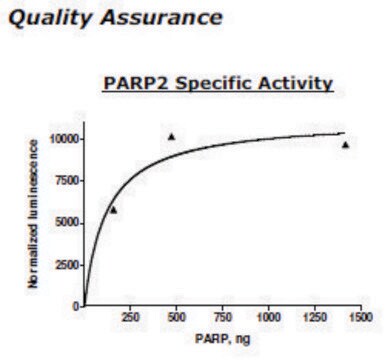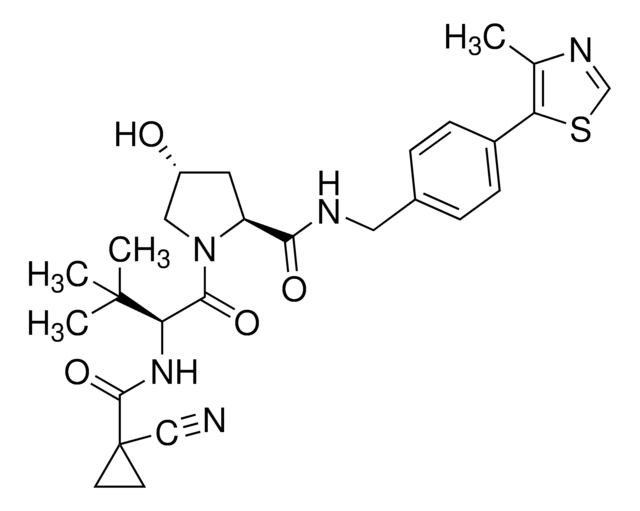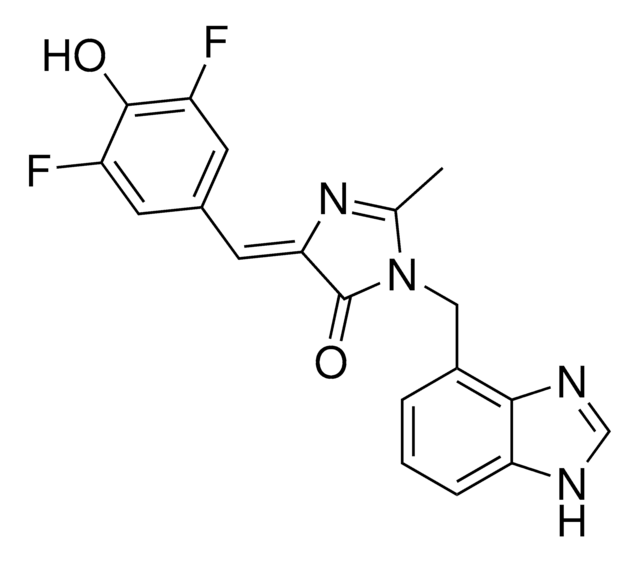SRP0192
PARP1 Active human
recombinant, expressed in baculovirus infected insect cells, ≥80% (SDS-PAGE)
Sinónimos:
ADPRT, NAD(+) ADP-ribosyltransferase 1, Poly (ADP-ribose) Polymerase 1
About This Item
Productos recomendados
biological source
human
recombinant
expressed in baculovirus infected insect cells
assay
≥80% (SDS-PAGE)
form
aqueous solution
mol wt
140 kDa
packaging
pkg of 10 and 20 μg
manufacturer/tradename
Sigma-Aldrich
storage condition
avoid repeated freeze/thaw cycles
concentration
>0.02 mg/mL
technique(s)
inhibition assay: suitable
NCBI accession no.
UniProt accession no.
application(s)
life science and biopharma
shipped in
dry ice
storage temp.
−70°C
Gene Information
human ... PARP1(142)
General description
Human PARP1 (GenBank Accession No. NM_001618), full length with N-terminal GST tag, MW = 140 kDa, expressed in a Baculovirus infected Sf9 cell expression system. Poly [ADP-ribose] polymerase 1 (PARP1) belongs to the DNA-dependent nuclear enzyme superfamily. Its structure includes an N-terminal with three zinc finger DNA-binding domains, an auto-modification domain with BRCT motif and a WGR domain having conserved tryptophan, glycine, and arginine residues, and a C-terminal catalytic domain with PARP signature sequence.
Application
Biochem/physiol Actions
Unit Definition
Physical form
Preparation Note
Storage Class
10 - Combustible liquids
wgk_germany
WGK 1
flash_point_f
Not applicable
flash_point_c
Not applicable
Elija entre una de las versiones más recientes:
Certificados de análisis (COA)
¿No ve la versión correcta?
Si necesita una versión concreta, puede buscar un certificado específico por el número de lote.
¿Ya tiene este producto?
Encuentre la documentación para los productos que ha comprado recientemente en la Biblioteca de documentos.
Nuestro equipo de científicos tiene experiencia en todas las áreas de investigación: Ciencias de la vida, Ciencia de los materiales, Síntesis química, Cromatografía, Analítica y muchas otras.
Póngase en contacto con el Servicio técnico







